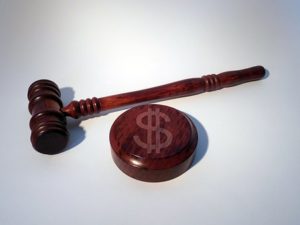Personal injury claims are the most litigated matters in most jurisdictions around the globe. In this claims, litigants go to court to assert that their rights have been violated and that a tortfeasor is bound to be held liable. Liability and compensation are the basis of all negligence claims, and therefore it is the responsibility of the plaintiff to prove that the defendant is responsible for injuries that he suffered. In order to recover in a claim of negligence, it is imperative that the plaintiff fulfills all the essential elements of negligence. Failure to substantiate any of these elements will absolve the defendant from any liability resulting from any such claim.
These Elements Of A Negligence Claim Are Illuminated As Follows;
A Duty Of Care
Negligence is based on a principle which is derived from the landmark case of Don oghue v Stevenson called “The neighbor principle”. This principle simply dictates that every person owes their neighbor a duty of care. A duty of care stipulates that one must always act reasonably and ensure that is actions do not risk the livelihood of another person(neighbor). This principle is not premised on the geographical proximity of individuals but the existence of a relationship between a defendant and a plaintiff. The existence of this duty is based on the view of any reasonable man.
oghue v Stevenson called “The neighbor principle”. This principle simply dictates that every person owes their neighbor a duty of care. A duty of care stipulates that one must always act reasonably and ensure that is actions do not risk the livelihood of another person(neighbor). This principle is not premised on the geographical proximity of individuals but the existence of a relationship between a defendant and a plaintiff. The existence of this duty is based on the view of any reasonable man.
Breach Of Duty
Having established the existence of a duty of care the plaintiff is required to ascertain that the defendant failed to exercise reasonable caution and in that regard acted negligently. The test in fulfilling the reasonability of the defendant is both subjective and objective. A defendant that consciously exposes a plaintiff to injury is liable for a breach of duty. Courts are usually keen to establish whether the tortfeasor could have foreseen an inherent risk and in that regard failed to prevent the risk.
Proximate Cause
 The law requires that the injuries suffered in a negligence claim must be directly related to the actions of the defendant in the case. The plaintiff can only recover for the damages that fall within the foreseeable risks of the defendant’s actions. For example, in a road accident, the driver is only liable for the injuries suffered by the plaintiff in the accident and not injuries suffered prior or after.
The law requires that the injuries suffered in a negligence claim must be directly related to the actions of the defendant in the case. The plaintiff can only recover for the damages that fall within the foreseeable risks of the defendant’s actions. For example, in a road accident, the driver is only liable for the injuries suffered by the plaintiff in the accident and not injuries suffered prior or after.
Monetary Loss
As aforementioned, a claim of negligence is sought out for compensation from the defendant. Therefore it is a requirement in law that the plaintiff must show that he incurred a monetary loss in aiding injuries which were incurred from the accident. Documented evidence like hospital receipts could be used to prove and value the damages recoverable in a suit.

